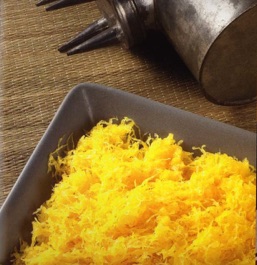The Dessert Dictionary Project



















éclair France

Election Cake United States (18th-19th centuries)
entremets France
The term, entremets, roughly follows the development of the French menu. Pre-Revolutionary menus took the form of several courses where numerous dishes were served buffet-style–the so-called “service à la française.” The sequential service common today, referred to as “service à la russe,” was introduced in the 19th century. Under the old way of serving, entremets were literally what was placed “entre les mets,” that is between the main dishes. The entremets were often pastries both sweet and savory, but they could also include vegetables. (In the late 1600s “hors d’oeuvres” meant roughly the same thing.) By the late nineteenth century the term entremets became more restrictive and started to refer to an exclusively sweet course to be served after the cheese course. The 1961 Larousse Gastronomique uses entremets as a synonym for dessert. More recently (since the 1990s?) entremet (without the “s”) has come to mean a cake made up of layers of sponge cake and mousse. This use is especially common in the United States but French pastry chefs also use it.
fairy cake UK
coming soon
far breton France
A dense, crusty custard or baked pancake typical of Brittany. It is similar to clafouti though here dried prunes take the place of fresh cherries.
fastnachts United States
figgy duff Newfoundland (Canada), UK
In Newfoundland, a figgy duff is a boiled pudding made with raisins, sweet spices and molasses. The terms comes from the UK where it was dialect for fig pudding though (at least in Cornwall) there also used to be a baked cake of the same name.
filo (also phyllo) Greece, yufka Turkey
fios de ovos Portugal

Photo: Antonio Rosado from Doçaria Popular Portuguesa, 2004
fritelle veneziane Italy